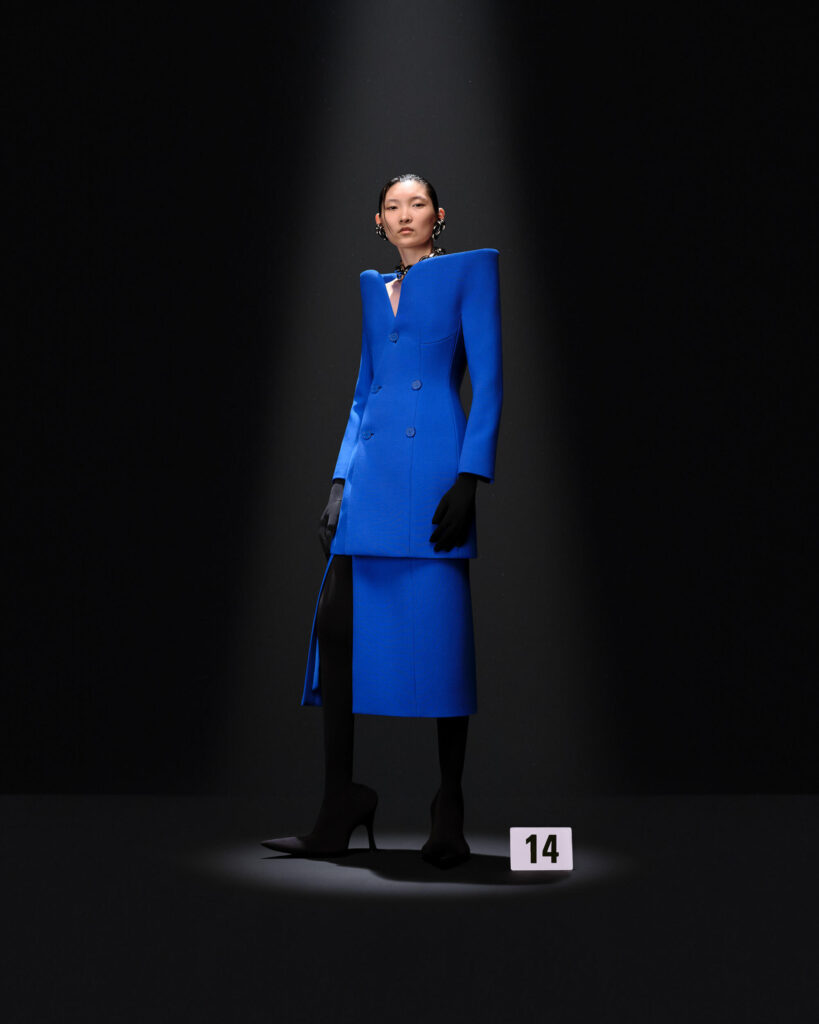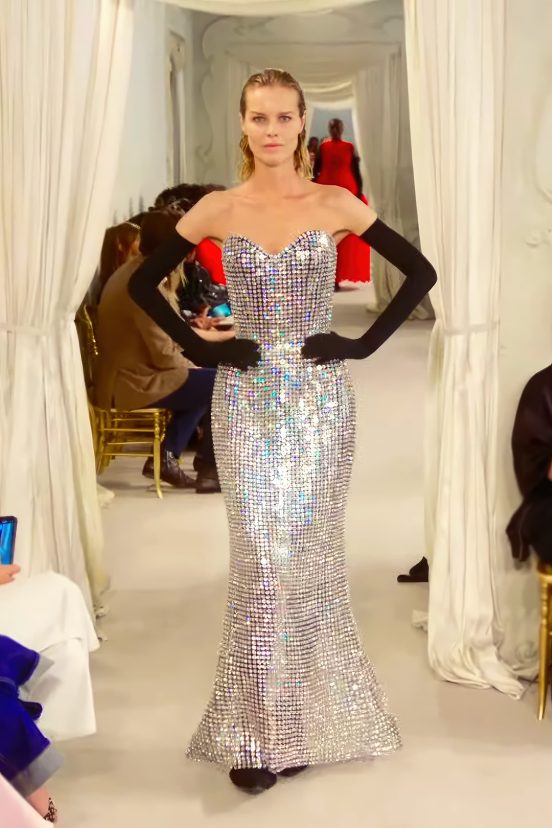Review of Balenciaga Fall 2023 Couture Fashion Show
We’re so Back
By Mark Wittmer
It’s been a weird year for Balenciaga. Following some high-profile controversies and subsequent public disavowals of past creative efforts and partnerships, Demna’s last few ready-to-wear shows have gotten away from the gimmick and spectacle that characterized much of his previous work and focused on the art of making clothes. The collections played it safe, sure, but it was also refreshing to see the focus fixed on the actual work of a still-great designer at a historic fashion house.
With his latest couture collection, Demna’s new era of focusing on the clothes has reached the place where it was meant to be.
Balenciaga’s couture was only revived in 2021, more than half a century after Crístobal Balenciaga shut down his couture house in 1968; Demna is the only creative director other than the man himself to design Balenciaga couture.
Held among the classic appointments of Balenciaga’s historic atelier at 10 Avenue George V in Paris and set to an a cappella operatic soundtrack, the show staging seemed to pick right back up from where Crístobal elegantly left off, and the first look – a black velvet evening gown worn with white gloves and strings of pearls – seemed to confirm this trip back in time to couture’s heyday. But instead, the ensuing collection brought this heyday to the present day.
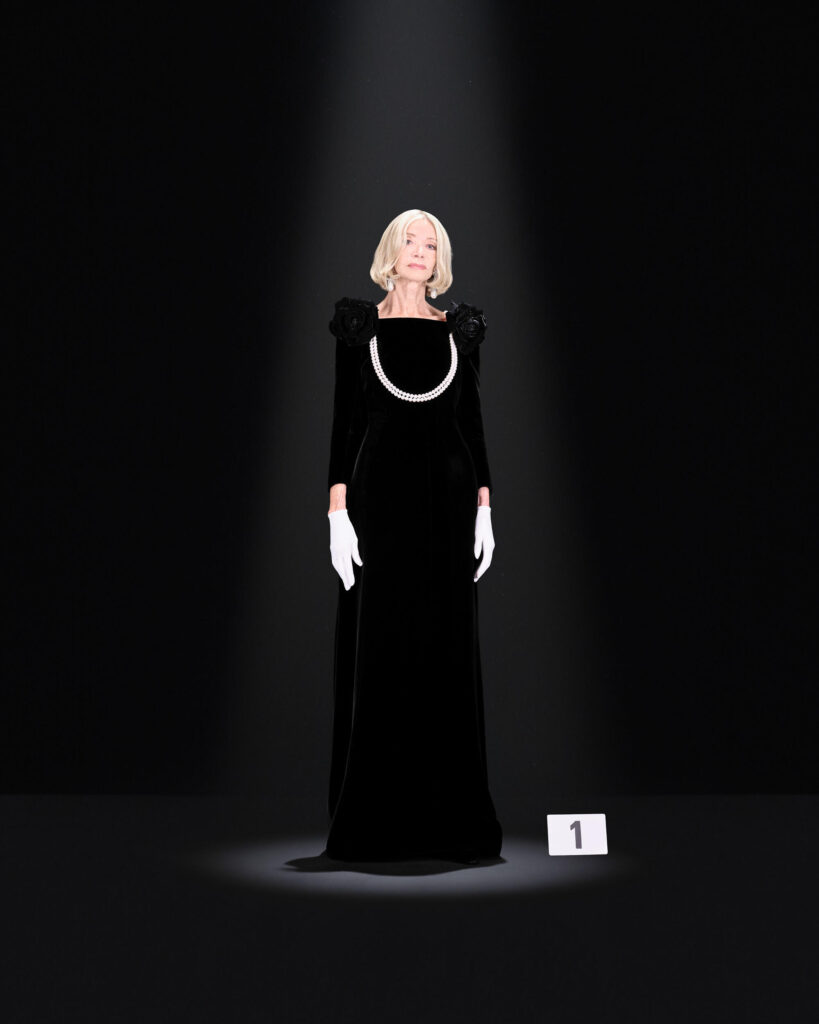
Punctuating the collection’s historic looks to Balenciaga’s era-defining approach to volume and tailoring are innovative and quietly amazing details that live at the cutting edge of fashion craftsmanship.
But first, the classics: early looks apply Demna’s penchant for the angular and oversized to takes on Balenciaga’s sculptural dressmaking. The Spanish couturier’s vision is even more directly present in the later dresses, with their drawn-in waists and cascading skirts or flowing silk trains.
The geometric lines of last season’s futuristic signature shoes, the Space Pump and the Space 2.0, are echoed across this season’s Opera Pump and Opera Derby, angular and pointed takes on classic leather shoes, made by hand from just one or two cuts of leather.

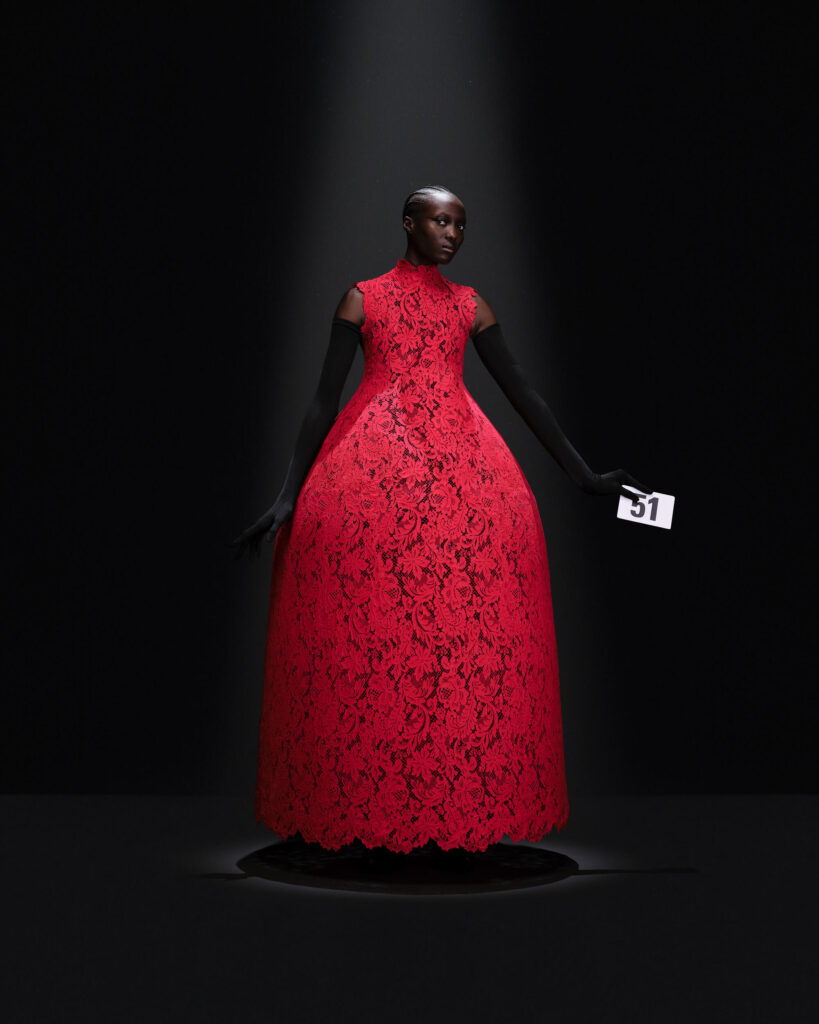
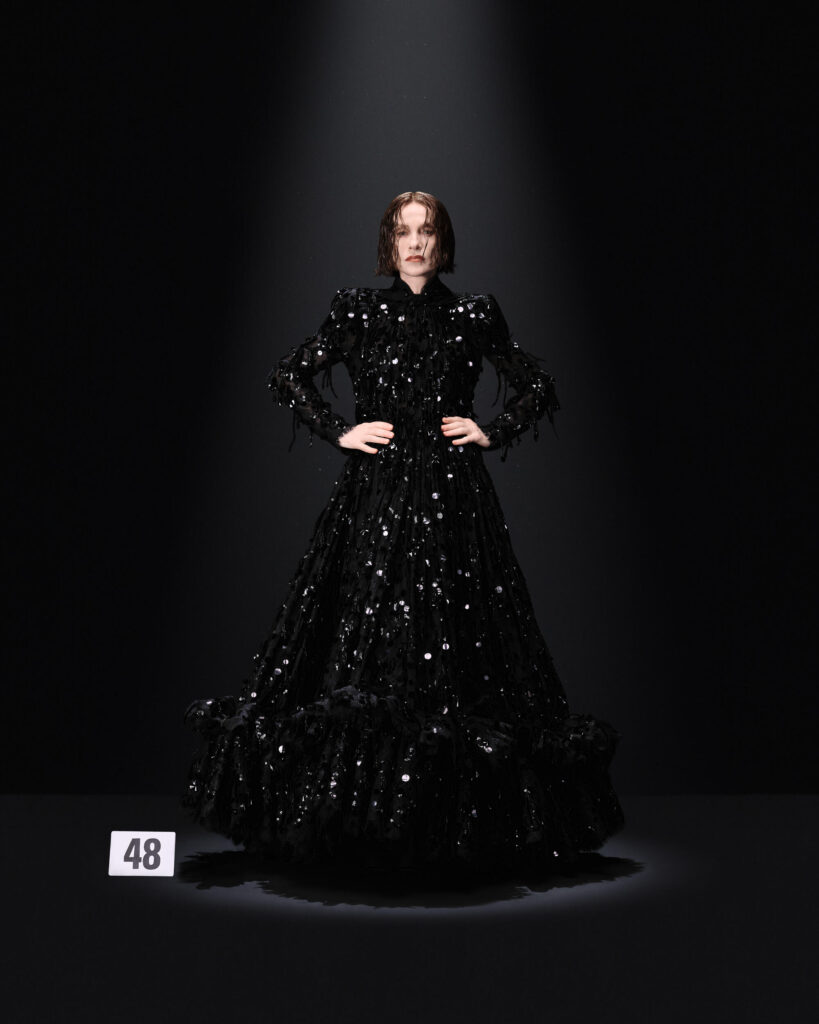

Woven between these revivals of Balenciaga’s historic couture spirit are pieces that at first feel a bit incongruous with the classically elegant looks, but an understanding of their craftsmanship reveals them to be seamless contemporary continuations of the house’s emphasis on craft and innovation.
At first leather trousers seem like they would have been more at home in a ready-to-wear collection. But these are in fact oil-on-linen masterpieces, linen pants with all of the “details” – pockets, topstitching, rivets, the distressed effect – meticulously painted on by hand. The same goes for the denim.
Meanwhile, what looks to be a classically tailored jacket checked wool Prince of Wales jacket is in fact black and gray denim woven on antique Japanese denim looms. Checked wool does actually appear on the overcoats, which feature an innovative knitted material bonded to the inside of the wool that allows the piece to be shaped by hand using heated irons, sculpting the coat as if it is being blown by the wind in a moment frozen in time.
The amazing final look combined references to 17th-century Spanish aristocratic dresses (the kind you see in a Velasquez painting) with depictions of Joan of Arc in her suit of armor, but actually achieved the stiff and shining metal appearance by using 3D-printed chromed resin.


Crístobal Balenciaga was famous for his idiosyncratic casting, which gets a contemporary twist here. An impressive lineup of iconic, veteran models – Liu Wen, Mariacarla Boscono, Saskia de Brauw, Iselin Steiro, and more – were joined by an eclectic group of newer faces, as well as returning Demna muse and legendary French actress Isabelle Huppert. In terms of casting couture still lags behind its relatively more accessible sibling ready-to-wear, and it was refreshing to see how the inclusion of older models, men, and non-binary and trans models also reflected the collection’s concern for guiding couture into the future.
Whether or not such an exclusive and undemocratic practice as haute couture has a place in a more just and equal future may be a separate conversation, but it’s impossible not to keep in mind when looking at these collections – especially when Balenciaga has made the unheard of move of listing the (very high) prices of some of its couture pieces on the brand’s website for all to see – which feels superficially more democratic but ostentatiously elitist. There is certainly some cognitive dissonance that comes from seeing the problems of late capitalism and being a fan of high fashion. But for anyone interested in fashion, what Demna has done here is undeniably fascinating.
If couture has a future, Demna has made a powerful case that it lies with Balenciaga.
